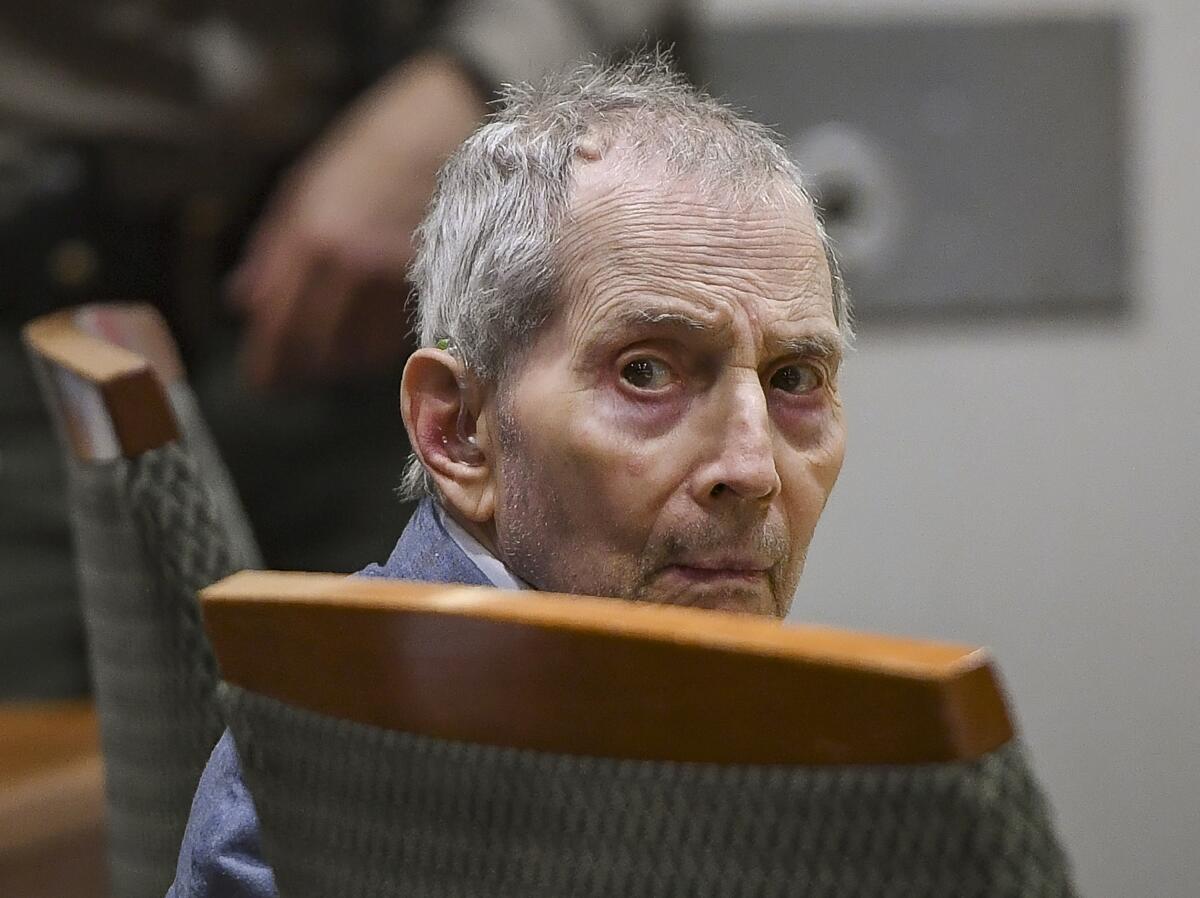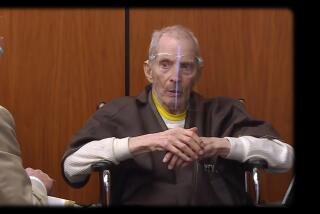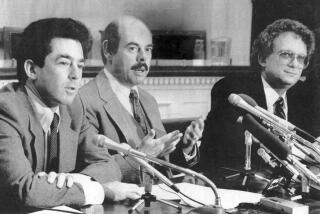Robert Durst trial: Victim’s lie about speaking to police ‘sealed her fate,’ prosecutors say

- Share via
Susan Berman told her close friend Robert Durst that police had contacted her, hoping to speak with her about the mysterious disappearance of Durst’s wife.
It was a lie, and Durst wouldn’t learn that for 15 years. But he said he reluctantly agreed Berman could talk to detectives: “What am I going to say, no?,” he said in an interview prepared for the HBO documentary “The Jinx: The Life and Deaths of Robert Durst.”
Los Angeles County prosecutors alleged Thursday that Durst’s permission concealed a violent plan that climaxed in 2000 with Berman’s killing.
“It was that statement by Susan Berman to Bob Durst that sealed her fate,” Deputy Dist. Atty. John Lewin said during the second day of his opening statements in the murder trial for Durst, who has pleaded not guilty.
Berman was found dead in her Benedict Canyon home on Christmas Eve and the fateful events of that year occupied much of Lewin’s address to the 12 jurors and 11 alternates in the compact courtroom near Los Angeles International Airport.
According to prosecutors, Durst was panicking because New York authorities had reopened the investigation into the 1982 disappearance of Kathleen Durst. Berman acted as Durst’s spokeswoman and prosecutors said she provided a “false alibi” for Durst, posing as the missing wife in a phone call to her medical school. The phone call bolstered the impression that Kathleen Durst was alive.
In a recording aired for the jurors, Durst summed up his reaction to the renewed inquiry: “I’ve been guilty for years in the newspapers … now they really are going to find me guilty.”
The eccentric heir to a New York real estate fortune began stockpiling cash, prosecutors said, and procured a shabby apartment in Galveston, Texas, where he planned to live disguised as a mute woman. He signed over power of attorney to his erstwhile girlfriend, Debrah Lee Charatan. He then asked Charatan to marry him, and in early December of 2000, the pair tied the knot.
A rabbi chosen from the phone book officiated. Lewin said Durst was open about the transactional purpose of the nuptials.
“I had to have Debrah to write my checks. I was setting myself up to be a fugitive,” Durst said in a recorded jail phone call.
By Dec. 19, 2000, he was boarding a flight to Eureka, in Northern California. Durst has claimed the trip’s purpose was to settle his affairs there; he owned a home in nearby Trinidad.
Prosecutors said he picked up his Ford Explorer and a series of phone calls to his personal voice mailbox place him in Garberville, on Dec. 21, about 90 miles south of his home in Trinidad.
The mileage on the Explorer is consistent with the 1,150-mile round-trip drive from Garberville to Berman’s home and back to San Francisco on the night of Dec. 23, Lewin said. Berman was shot dead in her home sometime between the night of Dec. 22 and the morning of Dec. 23, according to coroner’s records.
In San Francisco, Durst boarded a red-eye for New York City — a rare mode of transport for Durst. In an interview with prosecutors in 2015, Durst struggled to explain why his cross-country trip was so brief.
“I can’t explain it,” he told Lewin.
Lewin told jurors that New York detectives had zeroed in on Berman in their re-investigation into Kathleen Durst’s disappearance, but because of her intimate proximity to Durst, they had refrained from any contact.
It’s unclear why Berman lied to Durst. She was in dire straits financially, and her career was struggling. Prosecutors said she had trouble paying rent before Durst offered her a lifeline: he sent her $50,000 in the two months before she was killed.
The prosecution’s opening statements are set to conclude Monday.
More to Read
Sign up for Essential California
The most important California stories and recommendations in your inbox every morning.
You may occasionally receive promotional content from the Los Angeles Times.














